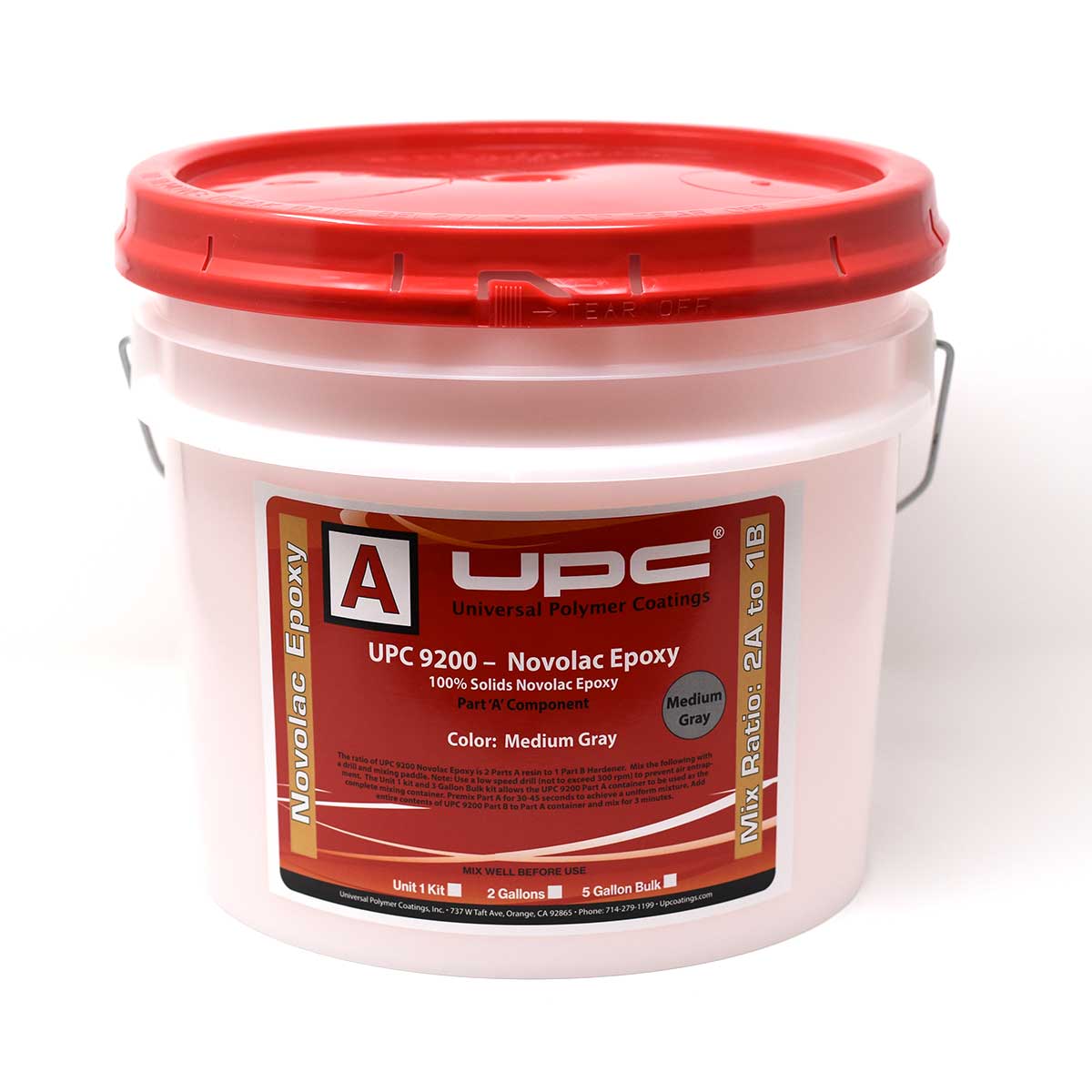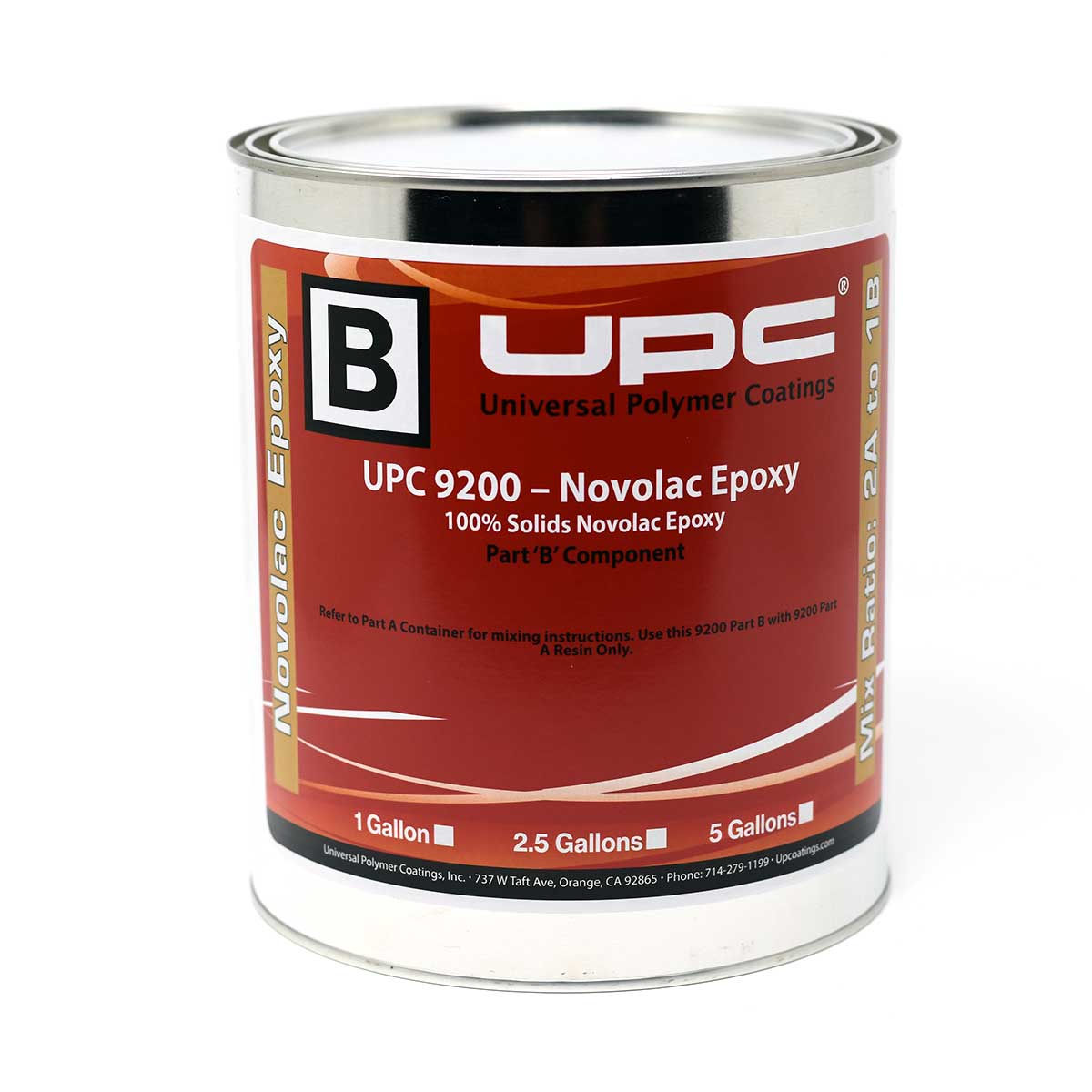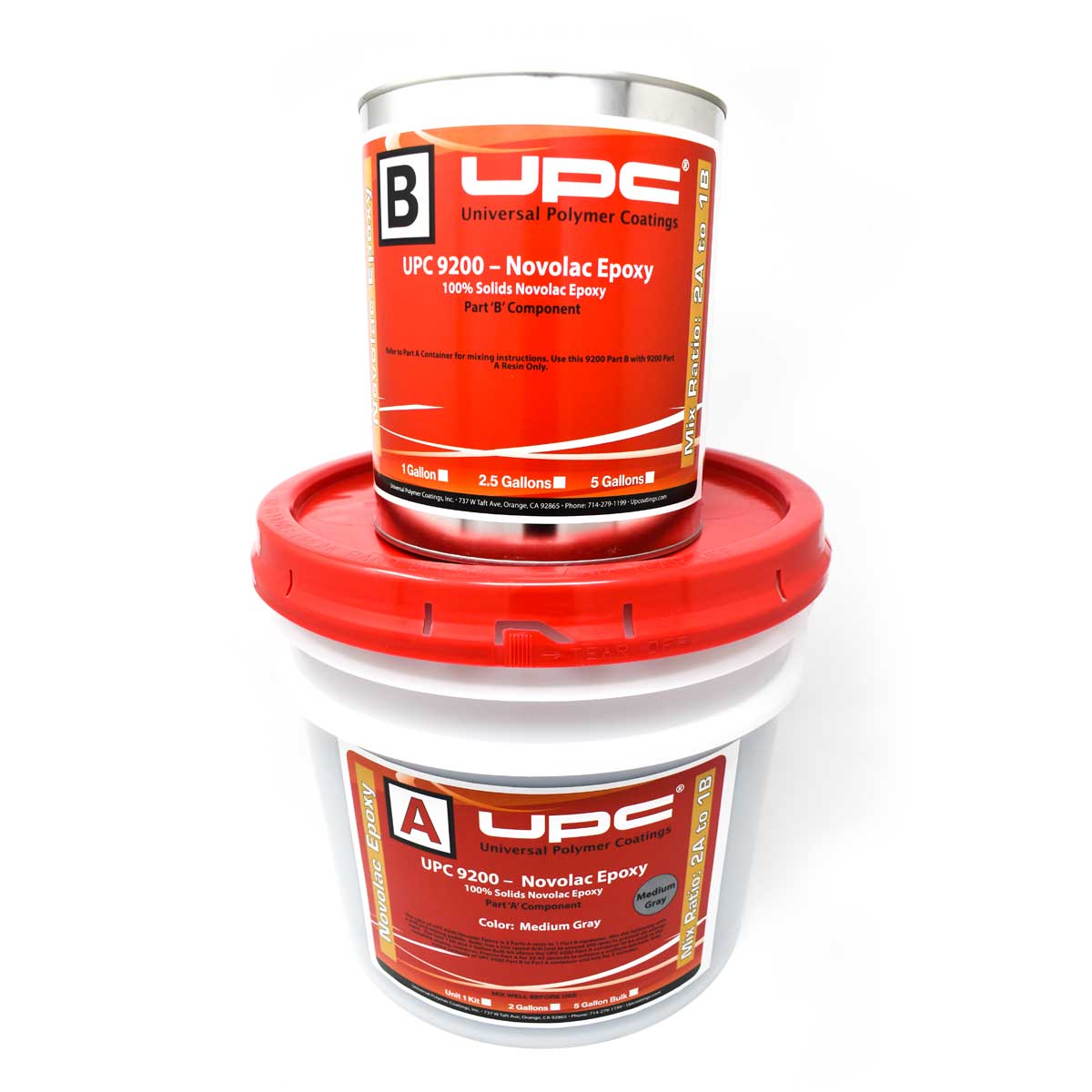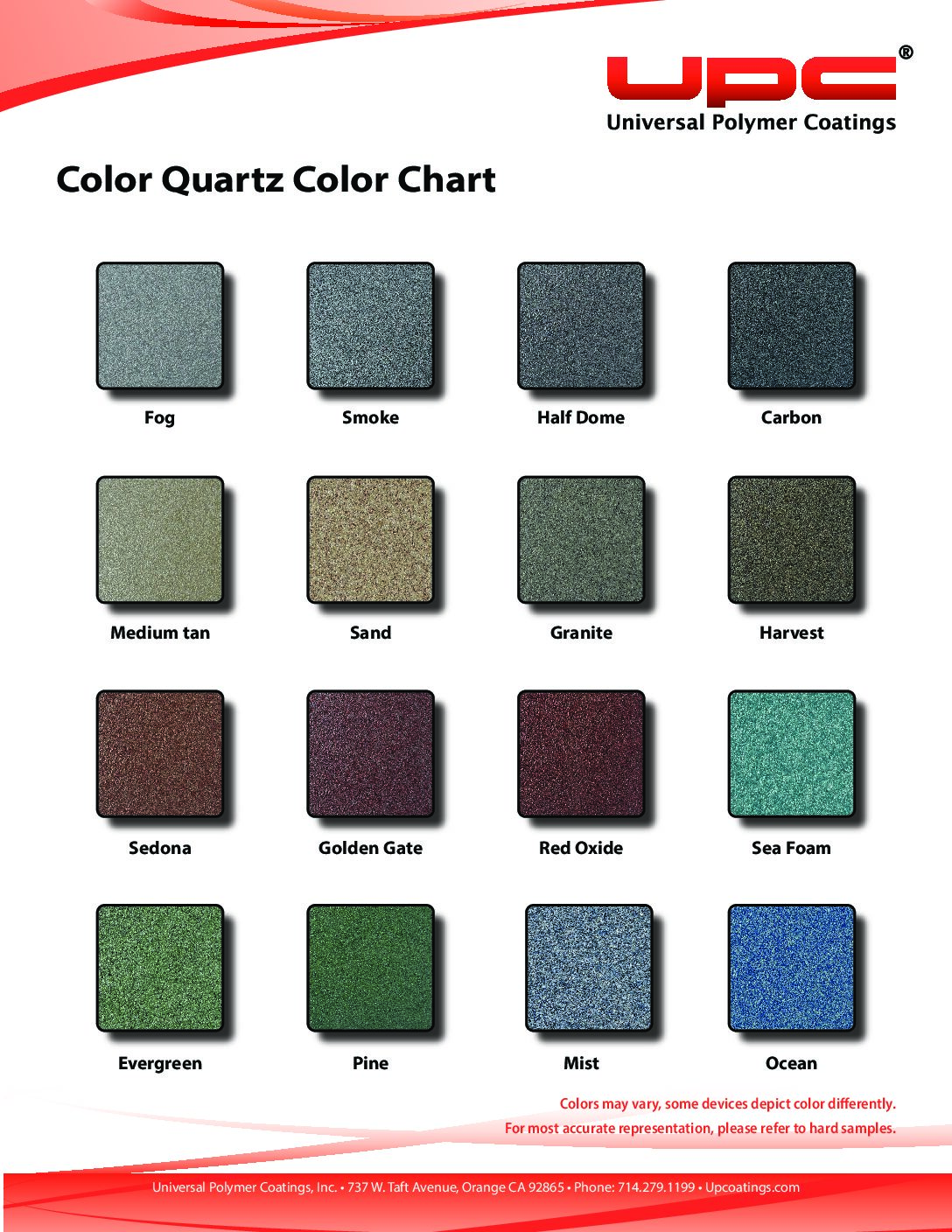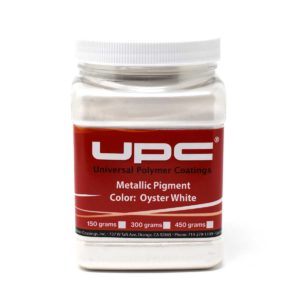UPC 9200 Novolac Epoxy
UPC 9200 Novolac Epoxy is an advanced, high-performance novolac, two-component overlayment and coating system. It has the highest chemical resistance in the industry today. It is generally applied between 12 mil to 16 mil with silica and also as a topcoat. Its design features provide for harsh chemical conditions.
Download TDS:
Advantages
- Low Odor
- Resin Rich
- VOC Compliant
- Withstands heavy traffic
- Nonporous
- Seamless flooring system
- Chemically resistant
- Stronger than regular Epoxy
Applications
The versatility of its chemistry allows UPC 9200 to be used in the following applications:
- Chemical Flooring
- Aerospace
- Chemical Storage
- Power Plants
- Trench and Sumps
- Commercial Kitchens
- Pharmaceutical Plants
- Animal Kennels
- Pulp & Paper Mills
- Acid Cleaning Facilities
Colors
UPC 9200 is available in clear and the following colors.
UPC standard colors are:
- Black
- Sand Beige
- White
- Safety Red
- Light Gray
- Tile Red
- Medium Gray
- Dark Gray
- Yellow
- Light Beige
Custom colors are available at an additional charge.
Packaging
UPC 9000 is available in two different kit sizes:
| Part A | Part B | |
| Unit 1 | Pre-measured A | Pre-measured B |
| 3 Gallon Kit | 2 gal. | 1 gal. |
| 15 Gallon Kit | 10 gal. | 5 gal. |
Testing
All surfaces are not the same. It is recommended that a sample area be done before the start of the project. The test should be done on-site, using the proposed method by the assigned applicator to ensure proper adhesion and color. A sample area should also be done on any existing coatings to determine if any contaminants exist or if delaminating will occur.
Physical Properties
| PROPERTY | VALUE | REFERENCE |
| Compressive Strength | 13,750 psi | ASTM C 579 |
| Flexural Strength | 5,475 psi | ASTM D 790 |
| Tensile Strength | 2,400 psi | ASTM D 307 |
| Bond to Concrete | 350 psi | ASTM D 4541 |
| Concrete fails at this point | ||
| Taber Abrasion | Loss/1,000 Cycles=26 mg | ASTM D 4060
CS 17 Wheels |
| Water Absorption | .10% Max. | ASTM D 413 |
| Linear Shrinkage | .01% Max. | ASTM C 531 |
| Flammability | Self-Extinguishing | ASTM D 635 |
| Hardness, Shore D | 85 | ASTM D 2240 |
| Impact Resistance | 16 ft/lb. – No Failure | Mil-D-3134H |
| Coefficient of Friction | .6 Minimum | ASTM D 2047 |
| Porosity on Unglazed Finish | .00 | NACE Standard TM-01-74 |
Product Data
| Volumetric Ratio: | 2 to 1 |
| Solids: | 100% (+ or – 1%) |
| Application temperature: | 65-90°F |
| Coverage: | 12-16 mil / 100-130 SF per gallon |
| Pot life: | 10-15 minutes |
| Working time on floor: | 20-30 minutes |
| Cure time: | 6-8 hours (walking)
24 hours (traffic) |
| Critical recoat time: | 24 hours |
| Shelf life: | 12 months |
| USDA Food & Beverage: | Meets requirements |
Concrete Preparation
Before coating is applied, concrete must be:
- Dry – No puddled water
- Clean – Contaminants removed
- Profiled – ICRI-CSP 2-3
- Sound – Cracks and spalled areas repaired and ground
Mechanical preparation is the preferred method of preparing concrete for coating application. Shot-blasting or diamond grinding are recommended to achieve ICRI-CSP (surface profile) 2-3.
Patching
Voids, cracks, and imperfections will be seen in finished coating if the concrete is not patched correctly. Patch concrete with UPC Perfect Patch. After the patching material is cured, diamond grind patch.
Mixing
The ratio of UPC 9200 is 2 to 1. That is, two parts A (resin) to one part B (hardener). Generally, three mixed gallons of UPC 9200 is ideal for application. Mix the following with a drill and mixing paddle. Note: If using a drill mixer, use a low speed (not to exceed 300 rpm) to prevent air entrapment.
- The Unit 1 kit allows the UPC 9200 Part A container to be used as the complete mixing container. Premix UPS 9200 Part A for 30 seconds. Add entire contents of UPC 9200 Part B and mix for 3 minutes.
- If using the Bulk 15-Gallon Kit, premix UPC 9200 Part A for 30-45 seconds. Pour out 2 gallons into an empty 5-gallon bucket, which then becomes the mixing bucket.
- Add 1 gallon of UPC 9200 Part B and mix for another 3 minutes.
- UPC 9200 is designed to be immediately poured on the floor. Leaving mixed product in the container will greatly reduce pot life. Once poured out on the floor, 10-15 minutes of working time can generally be expected.
Application Instructions
Application of UPC 9200 for a nominal 12-16 mil coating system is applied in two coats and in one pass as a topcoat.
- Always apply in descending temperatures. Concrete is porous and traps air. In ascending temperatures (generally mornings) the air expands and can cause outgassing in the coating. It is safer to apply coatings in the late afternoon, especially for exterior applications.
- Optimum ambient temperature should be between 65-90°F during application.
- Mix using above mixing instructions.
- Apply approximately 100-130 SF per gallon by immediately pouring out on surface in a ribbon, while walking and pouring at the same time until bucket is empty.
- Using a squeegee, pull UPC 9200 over substrate. As a first coat over bare concrete, pull resin as thin as possible while still wetting out concrete and uniformly covering surface. This allows trapped air to escape more easily.
- Using a 3/8” non-shedding phenolic (plastic) core paint roller, roll coating forwards and backwards.
- Lastly, back roll in the opposite direction as step 6.
Silica Sand Broadcast Instructions
- Silica Sand Broadcast: Following Step 6 above, gently throw the silica sand up into the air, allowing it to fall without lumping in one spot or moving the resin. Do this until the floor is totally saturated with the silica sand and the resin will not accept any more. This generally requires 1/2 to 3/4 lbs. per S/F. Allow to dry for 6-8 hours. Sweep floor and stone any high spots. Following either method, apply seal coat of 9200 Novolac or 7005 Polyaspartic at approx. 150 S/F per gallon.
Clean-up
UPC 9200, while in a un-reacted state, may be cleaned up with isopropyl alcohol or acetone. A strong solvent like methylene chloride may be required if resin is set up.
Product Limitations
Ground-level concrete slabs emit invisible moisture vapor. The allowable moisture emissions for concrete are 3 lbs. / 1,000 SF over a 24-hour period based on a Calcium Chloride Test. Also, a Relative Humidity (RH) test can be performed to test for moisture vapor. RH testing results should be below 85% per ASTM F2170. If moisture is above this level, then blistering and de-lamination of coating may occur. A calcium chloride or Relative Humidity test should be performed to determine concrete moisture levels. If moisture levels exceed the 85% for RH test or 3 lbs. for Calcium Chloride, then a concrete moisture vapor control system should be used first before applying coating system. Recommended system for cases of moisture above acceptable levels is UPC 5200. UPC 5200 Moisture Lock passes F3010 spec based on E96 testing results. Please contact UPC representative for additional details.
Coating systems are susceptible to cracking if the concrete moves or separates below the coating. Hence, joint and crack treatment should be reviewed prior to coating application. As a general rule, control joints (saw cuts) and random cracks should be saw-cut or chased first then filled with UPC 777 Perfect Patch. Construction/cold joints (two slabs which meet and hence move) should be treated. After the coating has been applied and cured, saw cut through the coating over construction joints and apply elastomeric caulking.
Warranty
Universal Polymer Coatings products are warranted for one year after date of purchase. Please refer to the UPC Limited Material warranty for additional clarification.
Safety
Consult UPC 9200 safety data sheet. Avoid contact with skin. Some individuals may be allergic to novolac epoxy resin. Protective eyewear, gloves, and clothing are recommended.

